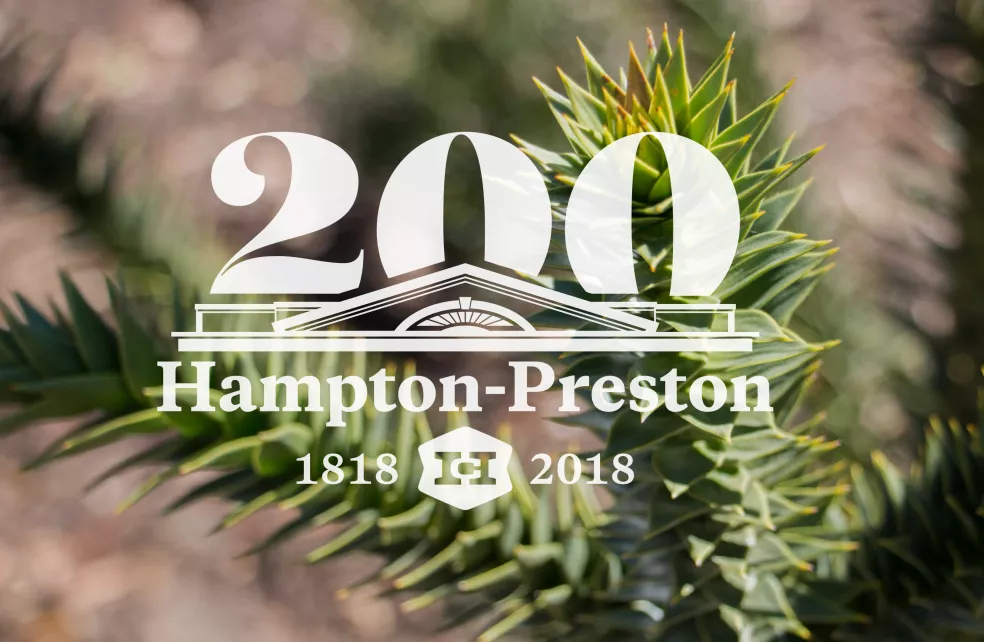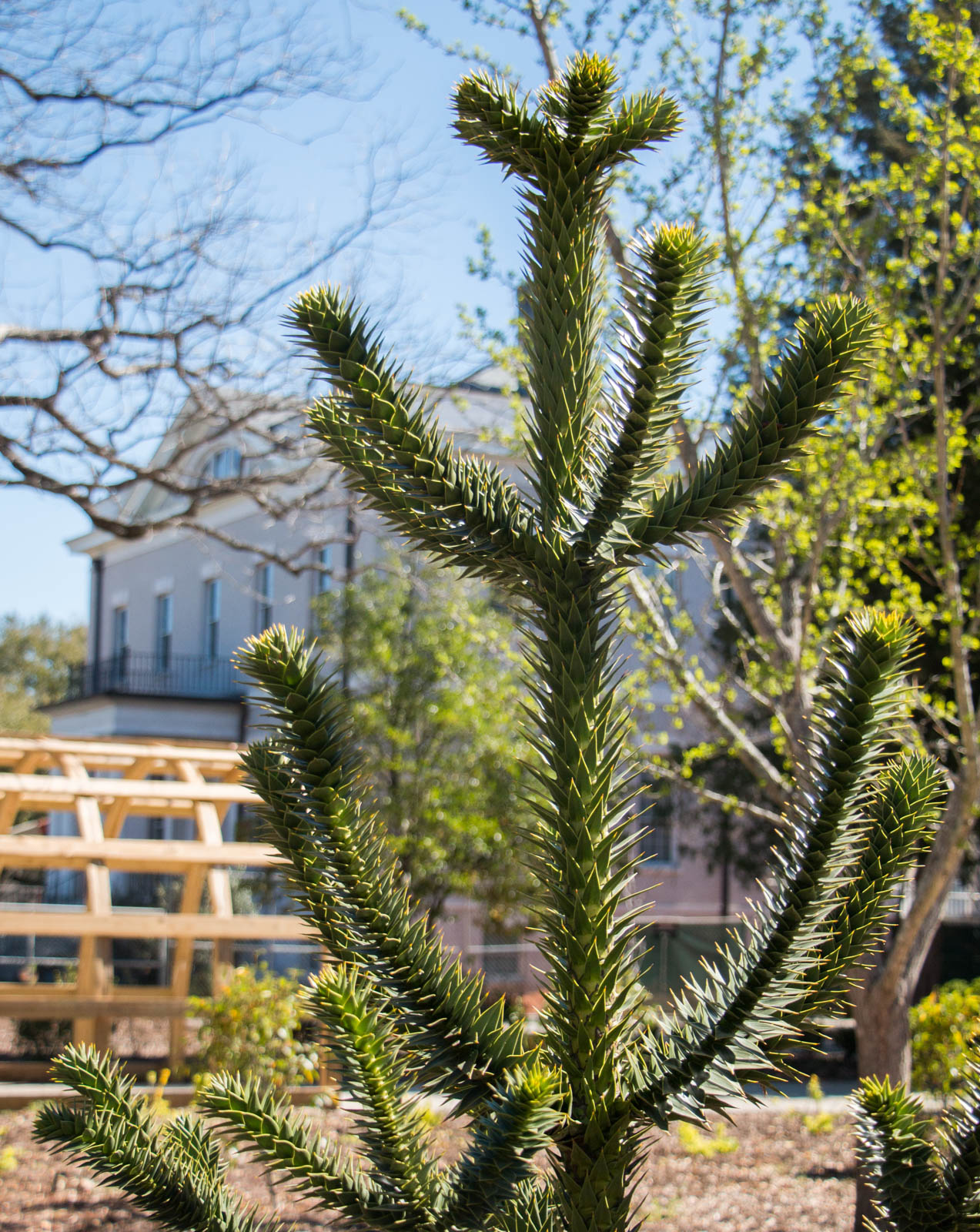Monkey Puzzle: The "Living Fossil" of Hampton-Preston
Monday, March 26th 2018

The gardens of the Hampton-Preston Mansion were one of the most celebrated in the antebellum south. With so much space to fill, we have relied on several sources to narrow our focus for plant material. While no explicit records of the content of the gardens exists from the Hamptons or Prestons, there are numerous visitor accounts of the gardens and the City of Columbia during that time. Along with this information, we rely on the catalogues of Pomaria Nurseries, which operated near what is now the town of Pomaria in Newberry County. This nursery was one of the largest and most important nurseries in the southern United States, supplying nearly all of the gardens of our region with hardy and exotic plants from around the world.
Araucaria araucana is one of the most exciting additions to the gardens. Commonly known as the Monkey Puzzle, this tree is a “living fossil” native to Chile. Like our ubiquitous pine trees, it is a conifer that will begin to bear massive cones after reaching maturity at forty to fifty feet tall. It’s distinctive prickly or reptilian appearance has been attributed to a self-defense strategy developed during its co-evolution with dinosaurs! Remarkably, this tree was offered by Pomaria Nurseries as early as 1852. It was also mentioned in this favorable account of Columbia’s plantings:

The Horticulturist, 1857
Jay Smith, Editor
Mr. Editor: I like this place surpassingly well. Columbia is certainly one of the most beautiful rural towns in the United States. The Camellia, Pittosporum, Gardenias, Magnolias, all the new Pines, Firs, Spruces, Thujas, &c., are here perfectly hardy, and very common in nearly every garden in the place, and nearly every dwelling has attached to it from one to four acres of ground under the protectorate of accomplished gardeners. There is a Magnolia grandiflora here sixty feet high, with a top whose diameter exceeds seventy feet – a perfect colossus of arboricultural beauty. I saw a Cryptomeria japonica, twenty feet in stature, and Araucaria Imbricata, twenty five feet high, a Cedrus Deodorii, thirty two feet from the ground to its extreme apex. Roses are in great profusion, flouting their beautiful heads from miles of hedge, exulting in balconies and parapets, enshrining cottages, and making nature generally exceedingly gorgeous; in fact, it is just the place to locate a paradisiacal garden.
As soon as I can steal a little time from my present labors, I will send you a description of some of the beauties which make me love – or as the poet sung: “A wood coeval with himself he sees, And loves his own contemporary trees.” I tried to purchase the Horticulturist here, but it wasn’t to be had.
Yours cordially,
C. Reagles